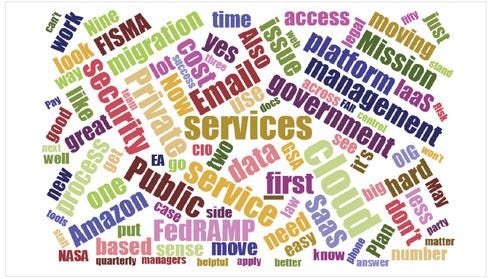Federal Agencies Struggle To Quantify Data Consolidation SavingsFederal Agencies Struggle To Quantify Data Consolidation Savings
At least six federal agencies report lack of data needed to calculate savings from data center consolidation efforts.


5 Early Cloud Adopters In Federal Government
5 Early Cloud Adopters In Federal Government (Click image for larger view and slideshow.)
Several federal agencies that have shut down IT facilities over the past few years as part of a government-wide data center consolidation effort appear to be having a hard time quantifying the actual benefits of those moves because of a lack of metrics.
The biggest challenge for the agencies apparently is just getting a handle on the baseline costs of running data center facilities from which to calculate savings, according to a recent report by the Government Accountability Office (GAO).
The report showed that, of the 24 agencies participating in the data center consolidation initiative, 19 reported cost savings and cost avoidance totaling $1.1 billion between 2011 and 2013.
[Dept. of Defense explores using private cloud services in government facilities. Read DoD May Invite Cloud Vendors Into Govt. Data Centers.]
The Departments of Defense, Homeland Security, and Treasury alone contributed to $850 million of those savings. Over the next year, the agencies involved in the consolidation effort plan to reduce data center costs by another $2.1 billion, raising the total savings to $3.3 billion.
That amount is about $300 million more than what the White House Office of Management and Budget (OMB) had projected when it launched the Federal Data Center Consolidation Initiative in 2010.
But for several agencies, calculating what they might have saved so far from data center cuts has proved to be challenging. At least six of the agencies participating in the consolidation initiative reported little or no costs savings because of a slew of operational and technical challenges, according to the GAO.
Some agencies, for example, had trouble gathering information on data center inventories and costs when the data centers were located in shared, multi-purpose facilities or belonged to smaller component organizations. Others cited complex organizational structures, service-level agreements, contractual obligations, and technology challenges.
The Department of the Interior, which has closed more than 60 data centers in the last few years, cited a lack of data on facility costs, including power-usage costs, as a reason for not being able to better articulate its actual savings.
NASA officials blamed the agency's complex organizational structure for its inability to report savings from closing 25 data centers recently. Determining savings has been extremely complex and impractical, NASA claimed, considering the multiple data centers that it operates with multiple missions and multiple IT contracts.
The General Services Administration said that its data center costs, including rents, leases, personnel equipment repair, and maintenance, are currently distributed across six component agencies spread out over 11 regions. Calculating savings has therefore been a challenge for the agency, according to the GAO.
Eight agencies reported a lack of electricity metering capabilities to determine power-usage costs.
The Federal Data Center Consolidation Initiative was launched in 2010 as part of an effort to promote green IT within government by cutting energy costs and reducing data center real estate. Under the effort, federal agencies will shutter and consolidate thousands of noncore data center facilities. The total savings from the initiative is expected to top $5 billion by the end of 2017.
The cost savings that have been reported so far would appear to indicate that the effort is on track to deliver the project savings, but some lawmakers have called the lack of metrics troubling.
"As the saying goes, you can't manage what you can't measure," Sen. Tom Carper (D-DE), who chairs the Senate Committee on Homeland Security and Governmental Affairs, said in a press release. "Without accurate tracking and reporting of performance measures, we run the risk of not achieving the full potential savings."
Rep. Gerald Connolly (D-VA), ranking member of the House subcommittee of government operations, said the "incomplete reporting and inadequate metrics" highlighted in the GAO report undermine the core objectives of the data center consolidation effort.
"The report reinforces my concern that more than four years after the launch of the FDCCI, we are losing sight of the initial long-term strategic goals of the initiative," he said in the release.
If you just look at vendor financials, the enterprise storage business seems stuck in neutral. However, flat revenue numbers mask a scorching pace of technical innovation, ongoing double-digit capacity growth in enterprises, and dramatic changes in how and where businesses store data. Get the 2014 State of Storage report today (free registration required).
About the Author
You May Also Like






